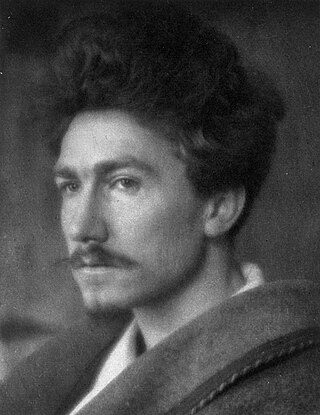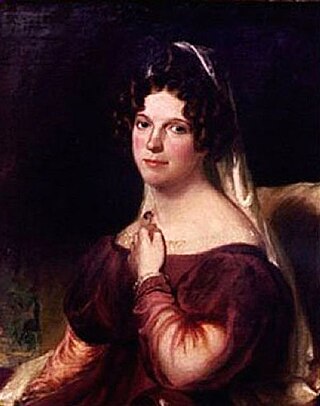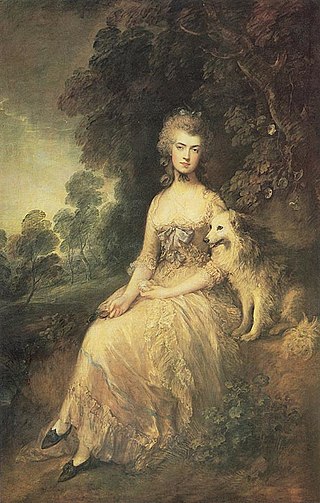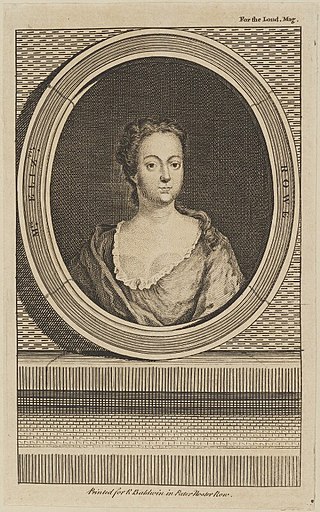Related Research Articles

Elizabeth Barrett Browning was an English poet of the Victorian era, popular in Britain and the United States during her lifetime and frequently anthologised after her death. Her work received renewed attention following the feminist scholarship of the 1970s and 1980s, and greater recognition of women writers in English. Born in County Durham, the eldest of 12 children, Elizabeth Barrett wrote poetry from the age of eleven. Her mother's collection of her poems forms one of the largest extant collections of juvenilia by any English writer. At 15, she became ill, suffering intense head and spinal pain for the rest of her life. Later in life, she also developed lung problems, possibly tuberculosis. She took laudanum for the pain from an early age, which is likely to have contributed to her frail health.

Ezra Weston Loomis Pound was an American poet and critic, a major figure in the early modernist poetry movement, and a collaborator in Fascist Italy and the Salò Republic during World War II. His works include Ripostes (1912), Hugh Selwyn Mauberley (1920), and his 800-page epic poem The Cantos.
Elizabeth Joan Jennings was a British poet.

Felicia Dorothea Hemans was an English poet. Regarded as the leading female poet of her day, Hemans was immensely popular during her lifetime in both England and the United States, and was second only to Lord Byron in terms of sales.

Hilda Doolittle was an American modernist poet, novelist, and memoirist who wrote under the name H.D. throughout her life. Her career began in 1911 after she moved to London and co-founded the avant-garde Imagist group of poets with American expatriate poet and critic Ezra Pound. During this early period, her minimalist free verse poems depicting Classical motifs drew international attention. Eventually distancing herself from the Imagist movement, she experimented with a wider variety of forms, including fiction, memoir, and verse drama. Reflecting the trauma she experienced in London during the Blitz, H.D.'s poetic style from World War II until her death pivoted towards complex long poems on esoteric and pacifist themes.

Anna Laetitia Barbauld was a prominent English poet, essayist, literary critic, editor, and author of children's literature. A prominent member of the Blue Stockings Society and a "woman of letters" who published in multiple genres, Barbauld had a successful writing career that spanned more than half a century.

Elizabeth Smart was a Canadian poet and novelist. Her best-known work is the novel By Grand Central Station I Sat Down and Wept (1945), an extended prose poem inspired by her romance with the poet George Barker.

Charlotte Smith was an English novelist and poet of the School of Sensibility whose Elegiac Sonnets (1784) contributed to the revival of the form in England. She also helped to set conventions for Gothic fiction and wrote political novels of sensibility. Despite ten novels, four children's books and other works, she saw herself mainly as a poet and expected to be remembered for that.

Mary Robinson was an English actress, poet, dramatist, novelist, and celebrity figure. She lived in England, in the cities of Bristol and London; she also lived in France and Germany for a time. She enjoyed poetry from the age of seven and started working, first as a teacher and then as actress, from the age of 14. She wrote many plays, poems and novels. She was a celebrity, gossiped about in newspapers, famous for her acting and writing. During her lifetime she was known as "the English Sappho". She earned her nickname "Perdita" for her role as Perdita in 1779, and was the first public mistress of King George IV while he was still Prince of Wales.

Elizabeth Drew Stoddard was an American poet and novelist.

Amy Judith Levy was an English essayist, poet, and novelist best remembered for her literary gifts; her experience as the second Jewish woman at Cambridge University, and as the first Jewish student at Newnham College, Cambridge; her feminist positions; her friendships with others living what came later to be called a "New Woman" life, some of whom were lesbians; and her relationships with both women and men in literary and politically activist circles in London during the 1880s.

Anne Katharine Stevenson was an American-British poet and writer and recipient of a Lannan Literary Award.

Meena Alexander was an Indian American poet, scholar, and writer. Born in Allahabad, India, and raised in India and Sudan, Alexander later lived and worked in New York City, where she was a Distinguished Professor of English at Hunter College and the CUNY Graduate Center.

Elizabeth Singer Rowe was an English poet, essayist and fiction writer called "the ornament of her sex and age" and the "Heavenly Singer". She was among 18th-century England's most widely read authors. She wrote mainly religious poetry, but her best-known work, Friendship in Death (1728), is a Jansenist miscellany of imaginary letters from the dead to the living. Despite a posthumous reputation as a pious, bereaved recluse, Rowe corresponded widely and was involved in local concerns at Frome in her native Somerset. She remained popular into the 19th century on both sides of the Atlantic and in translation. Though little read today, scholars have called her stylistically and thematically radical for her time.

Ralph Griffiths was an English journal editor and publisher of Welsh extraction. In 1749, he founded London's first successful literary magazine, the Monthly Review (1749–1845), and remained its editor until his death in 1803.
Maria Abdy, née Smith, also known as Mrs Adby, was an English poet.
Alta Gerrey was a British-American poet, prose writer, and publisher, best known as the founder of the feminist press Shameless Hussy Press and editor of the Shameless Hussy Review. Her 1980 collection The Shameless Hussy won the American Book Award in 1981. She is featured in the feminist history film She's Beautiful When She's Angry.

Maria Saskia Hamilton was an American poet, editor, and professor and university administrator at Barnard College. She published five collections of poetry, the final of which, All Souls, was posthumously published in September 2023. Her academic focus was largely on the American poet Robert Lowell; she edited several collections of the writings and personal correspondence of Lowell, Elizabeth Hardwick, and Elizabeth Bishop. Additionally, she served as the director of literary programs at the Lannan Foundation, as the Vice Provost for Academic Programs and Curriculum at Barnard College, and as an editor at The Paris Review and Literary Imagination.

Elizabeth Graeme Fergusson, or Betsy Graeme; was an American poet and writer, known for The Dream (1768). She held literary salon gatherings called "attic evenings", based upon French salons. Her attendees included Jacob Duché, Francis Hopkinson, Benjamin Rush, and her niece, Anna Young Smith. She wrote poetry and a wide range of works, taught writing, and mentored women writers, like Annis Boudinot Stockton and Hannah Griffitts.

Leonora Blanche Lang was an English writer, editor, and translator. She is best known as variously the translator, collaborator and writer of The Fairy Books, a series of 25 collections of folk and fairy tales for children she published with her husband, Andrew Lang, between 1889 and 1913. The best known of these are the Rainbow Fairy Books, a series of twelve collections of fairy tales each assigned a different colour.
References
- ↑ Wellington, Jan. The Poems and Prose of Elizabeth Moody. Dotoral Dissertation, University of New Mexico. 1997.
- ↑ Mary A. Waters (2004). British women writers and the profession of literary criticism, 1789-1832. Palgrave Macmillan. ISBN 978-1-4039-3626-4.